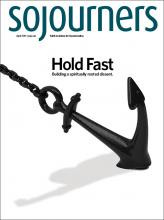FOOD DESERTS ARE low-income areas in urban or rural locations whose populations lack easy access to fresh fruit, vegetables, and other whole foods, usually because of lack of easy access to supermarkets. In 2010, the USDA reported that 18 million Americans live in food deserts, meaning more than a mile from a supermarket in urban/suburban areas and more than 10 miles in rural areas.
While suburban shoppers have more choices than ever, urban and rural Americans often lack access to quality food choices.
Karen Gonzalez, a church and community engagement specialist in Baltimore, works with immigrant populations. “For our clients, the challenge is that they work a lot, often two jobs, so getting to the grocery store and then cooking is a challenge,” says Gonzalez. “The other issue is that there are only two grocery stores in that part of town, and one of them is in the gentrified district—a Whole Foods. So clients often end up in bodegas or convenience stores, which have limited options and are more expensive.”
Food deserts in rural regions naturally raise different problems than those in urban areas. It is unsurprising that supermarkets are farther from people’s homes, but it can be overlooked that some rural low-income people do not own or have direct access to cars.
“Driving down a two-lane highway in rural Nebraska last spring, I passed a Native American man riding an old bicycle toward the nearby Omaha Indian Reservation,” wrote Steph Larsen on Grist.org. “We were at least seven miles from the nearest town, and he had four grocery bags bulging with food slung over his handlebars as he worked to climb a hill. I’ll bet a week’s worth of groceries that he wasn’t biking for the exercise.”
Read the Full Article

